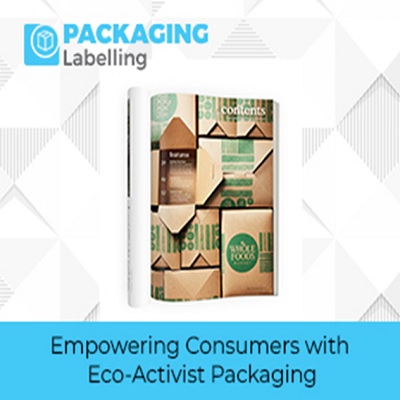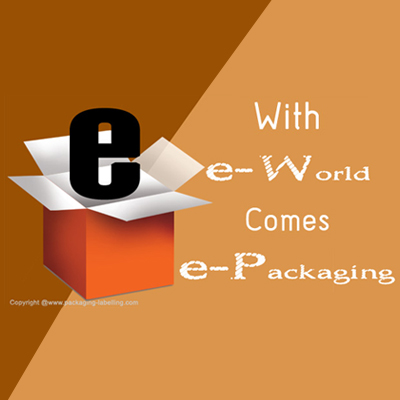Empowering Consumers with Eco-Activist Packaging

Introduction
In recent years, there has been a noticeable surge in the global push for sustainability and heightened environmental awareness. This growing concern to combat climate change and minimize waste has prompted consumers to become more conscious of the ecological consequences of their choices. Packaging, in particular, has become a focal point for significant advancements in promoting sustainability. Empowering consumers with eco-activist packaging, a dynamic approach aimed at providing environmentally friendly options, has emerged as a powerful tool to encourage sustainable decisions. By revolutionizing the concept of packaging, companies have the potential to inspire and equip consumers to adopt more eco-friendly practices.
Statistical Evidence
A report from Grand View Research has revealed promising prospects for the global sustainable packaging market. It predicts a significant upswing in the industry, with an estimated value of $440.3 billion by 2027. This translates to a steady compound annual growth rate (CAGR) of 7.0%. The findings underline the escalating demand for eco-friendly packaging solutions and signify the substantial market potential that lies ahead.
According to estimates provided by the Ellen MacArthur Foundation, a staggering 95% of the value of plastic packaging, which amounts to $80-120 billion per year, is lost to the economy due to its short-lived initial use. This alarming statistic underscores the pressing necessity for sustainable packaging alternatives that can effectively minimize waste and foster a circular economy. By adopting such solutions, we can address the urgent need to reduce plastic pollution and ensure a more sustainable future for our planet.
Eco-Activist Packaging
1. Understanding Eco-Activist Packaging
Eco-activist packaging extends beyond its conventional role of product protection and containment. It adopts a comprehensive approach that takes into account the complete life cycle of packaging, from the sourcing of materials to the final disposal. The primary objective of this type of packaging is to reduce its environmental impact through a range of strategies, including the use of recyclable or biodegradable materials, waste reduction initiatives, and the promotion of reuse. Its design is specifically crafted to encourage and empower consumers, motivating them to actively engage in sustainable practices and contribute to broader sustainability efforts.
2. Raising Consumer Awareness
One of the key roles of eco-activist packaging is to educate and raise awareness among consumers about the environmental impact of their choices. Packaging becomes a medium through which information about sustainability practices, such as recycling instructions and carbon footprint calculations, can be conveyed. By providing transparent and easily understandable information, consumers are empowered with the knowledge needed to make informed decisions.
3. Fostering Sustainable Behavior
Eco-activist packaging goes beyond mere awareness-raising; it seeks to actively foster sustainable behavior among consumers. This can be achieved through innovative design elements that encourage recycling, reusing, or repurposing of the packaging. For example, companies may employ clever folding techniques that transform the packaging into functional objects like storage containers or even children's toys. By giving packaging a second life, consumers are incentivized to embrace a circular economy mindset.
4. Influencing Purchasing Decisions
Packaging has a significant influence on consumer purchasing decisions. Eye-catching designs, slogans, and labels can captivate consumers and entice them to choose certain products. Eco-activist packaging leverages this influence to encourage consumers to opt for sustainable options. Packaging that proudly showcases eco-friendly certifications, such as Forest Stewardship Council (FSC) labels or recyclability symbols, signals to consumers that the brand is committed to sustainability. By aligning their values with eco-conscious packaging, consumers are empowered to make choices that positively impact the environment.
5. Creating a Sense of Community
Eco-activist packaging has the power to create a sense of community among like-minded individuals. Companies can leverage social media platforms and online communities to encourage consumers to share their sustainable packaging experiences and ideas. By fostering a sense of belonging and collective action, consumers are further empowered to take part in the sustainability movement. This community-driven approach builds momentum and inspires others to join, creating a ripple effect of positive change.
6. Collaboration for Greater Impact
To maximize the impact of eco-activist packaging, collaboration between businesses, consumers, and policymakers is essential. Companies can work together with consumers to co-create packaging solutions that meet both environmental goals and consumer preferences. Governments can play a crucial role by implementing regulations and incentives that encourage sustainable packaging practices. By fostering collaboration, stakeholders can empower consumers with eco-activist packaging and drive systemic change on a larger scale.
7. Extending Product Lifespan
Eco-activist packaging also plays a crucial role in extending the lifespan of products. By utilizing durable and high-quality materials, packaging can protect products throughout their entire lifecycle, reducing the need for frequent replacements. This not only minimizes waste but also empowers consumers by offering products that are designed to last. Additionally, packaging that facilitates easy repairs or offers refillable options encourages consumers to invest in long-term, sustainable choices.
8. Convenience and Portability
While sustainability is a priority, eco-activist packaging recognizes that consumer convenience and portability are equally important. By creating packaging that is lightweight, easy to carry, and convenient to use, companies can encourage eco-friendly practices without compromising practicality. For example, single-use plastic bottles can be replaced with lightweight, reusable containers or pouches that are easy to carry and refill. By prioritizing convenience, eco-activist packaging appeals to a broader consumer base, making sustainable choices more accessible and widespread.
9. Communicating Brand Values
In today's market, consumers are increasingly interested in supporting brands that align with their values. Eco-activist packaging provides companies with an opportunity to communicate their commitment to sustainability and environmental stewardship. By integrating messaging that emphasizes the brand's eco-conscious efforts, companies can establish a positive brand image and attract environmentally-conscious consumers. This alignment of values creates a sense of trust and empowerment, as consumers feel that their choices contribute to a larger collective effort towards sustainability.
10. Tracking and Measuring Environmental Impact
Eco-activist packaging can incorporate innovative technologies that allow consumers to track and measure the environmental impact of their purchases. For instance, smart packaging could include QR codes or embedded chips that provide information on the carbon footprint, water usage, or waste generated during the production and distribution of a product. By making this data easily accessible, consumers can make informed decisions based on the environmental performance of different products, further empowering them to choose sustainable options.
11. Supporting Local and Sustainable Supply Chains
Eco-activist packaging extends beyond the packaging materials themselves; it also encompasses the entire supply chain. Companies can empower consumers by prioritizing local sourcing, supporting sustainable farming practices, and engaging in fair trade initiatives. Packaging can communicate these efforts, highlighting the ethical and sustainable aspects of the supply chain. By choosing products with eco-activist packaging, consumers actively support businesses that are committed to social and environmental responsibility.
12. Advocating for Policy Change
Eco-activist packaging provides a platform for consumers to actively advocate for policy changes that advance sustainability. By actively engaging with consumers and welcoming their feedback, companies can gain valuable insights and diverse perspectives. This valuable information can be utilized to support policy initiatives and lobbying endeavors aimed at implementing regulations that promote sustainable packaging practices on a broader scale. Empowered consumers have the ability to play an instrumental role in instigating systemic change by leveraging their collective voices to influence policy decisions and demand increased sustainability practices from both companies and governments.
Specific Examples
1. Loop: Loop is a global platform that offers reusable packaging for various consumer products. They partner with leading brands to deliver products in durable and reusable containers. Consumers can return the empty containers, which are then cleaned, refilled, and reused. This model promotes waste reduction and encourages a circular economy mindset.
2. Seed Phytonutrients: Seed Phytonutrients, a sustainable skincare brand, uses eco-activist packaging made from 100% recycled paper. Their packaging is designed to be easily recyclable and compostable, aligning with their commitment to minimizing environmental impact.
Challenges and Potential Solutions
Consumer Behavior: One of the challenges is encouraging consumers to adopt sustainable behaviors, such as recycling or reusing packaging. Companies can address this challenge by incorporating educational campaigns, rewards programs, or partnerships with environmental organizations to raise awareness and incentivize sustainable practices.
Infrastructure and Recycling Facilities: Limited access to recycling infrastructure is a significant challenge in many regions. To overcome this, companies can collaborate with local governments and waste management organizations to improve recycling facilities and develop efficient collection and recycling systems. Investing in innovation for recyclable materials and collaborating with recycling companies can also drive progress in this area.
Cost and Scale: Implementing eco-activist packaging solutions can come with higher upfront costs and scalability challenges for businesses. However, by working collaboratively with packaging suppliers, optimizing supply chains, and leveraging economies of scale, companies can reduce costs and make sustainable packaging more financially viable.
Policy and Regulations: Inconsistent or inadequate policies and regulations can hinder the adoption of eco-activist packaging practices. Companies can advocate for supportive policies and engage with policymakers to influence legislation that promotes sustainable packaging practices. Collaboration between businesses, governments, and industry associations is crucial to address regulatory challenges.
Conclusion
Empowering consumers with eco-activist packaging goes beyond simply providing sustainable alternatives. It involves raising awareness, fostering behavior change, creating a sense of community, and promoting collaboration among businesses, consumers, and policymakers. By embracing eco-activist packaging, companies can inspire consumers to make informed and sustainable choices, transforming them into agents of change. Together, we can create a future where eco-activist packaging becomes the norm, enabling a more sustainable and resilient planet for generations to come.









